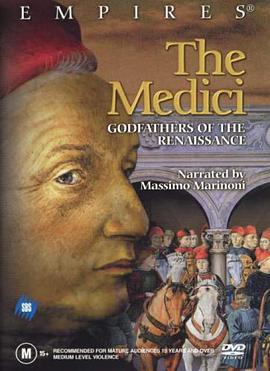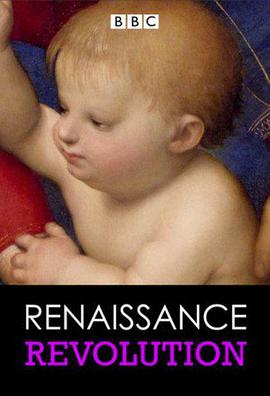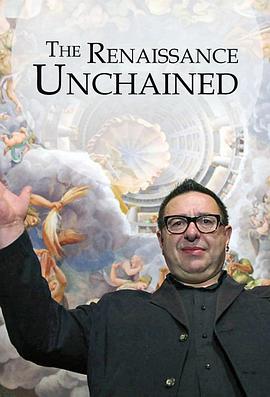文艺复兴教父:美第奇家族 (2004) 豆瓣
Medici: Godfathers of the Renaissance
8.5 (24 个评分)
导演:
贾斯廷哈代
演员:
Mario Biagioli
/
Dr. Jerry Brotton
…
这是一个来自15世纪意大利佛罗伦斯的家族。美第齐家族通过各种方式在欧洲崛起。通过自身的魅力、技巧、欺诈、他们搜刮了大量的财富并拥有了前所未有的权利。是他们点燃了西方世界最重要的文化和艺术的革命――欧洲文艺复兴。但是由美第齐家族促成的这种变化终有一天会颠覆以他们的规则所统治的世界。
美第奇家族(Medici family),或译为梅第奇家族、梅迪契家族,是佛罗伦萨13世纪到17世纪时期拥有强大势力的家族。在这个家族里产生了三位教皇、佛罗伦萨众多的统治者,并且也成为了法国皇族的最新成员。
美第奇家族的家徽最初这个家族并不起眼(名字的起源是不定的,虽然它大概反应了医疗贸易的词汇 - medico),家庭通过银行业务积累起最初的力量。美第奇银行是欧洲最兴旺和最尊敬的银行之一。以此为基础,家庭开始在佛罗伦萨获取政治力量, 并且以后将势力扩张到了意大利和欧洲。
乔凡尼·德·美第奇是第一个进入银行业务的美第奇人,并且当他开始在佛罗伦萨政府有一定影响力。到他的儿子柯西莫·德·美第奇在1434年时,美第奇家族已成为非官方的佛罗伦萨的共和国的国家首脑(当选为正义旗手)。柯西莫家族分支一直统治佛罗伦萨,直到第一代佛罗伦萨公爵亚历山大·德·美第奇在1537年被刺杀。 权势转移到乔凡尼小儿子洛伦佐·德·美第奇的分支,由乔凡尼的玄孙柯西莫一世执掌。
艺术和建筑
美第奇家族的最重大的成就在于艺术和建筑方面,在文艺复兴时期起了很大的促进作用。乔凡尼是这个家族中第一个赞助艺术的。援助马萨其奥并且定货重建圣洛伦佐教堂。柯西莫·德·美第奇著名的艺术性的合作者是多那太罗和菲利波·利比修士。那段时期里最灿烂的一笔就是米开朗基罗,从洛伦佐开始他为几代美第奇效劳。除了委任艺术和建筑方面的工作外, 美第奇也进行大量收藏,现在他们的收藏是佛罗伦萨的乌菲兹美术馆的核心展品。
在建筑方面,美第奇家族给佛罗伦萨留下了许多著名的景点,其中包括乌菲兹美术馆,碧提宫,波波里庭院和贝尔维德勒别墅。
乔凡尼委任布鲁内勒斯基 重建圣洛伦佐教堂 1419年。
柯西莫委任布鲁内勒斯基继续未完成的圆顶花之圣母教堂。1436年 当时世界最大的圆顶完工 。
托莱多的埃利诺,柯西莫一世的妻子,向Buonaccorso Pitti购买碧提宫 1550年 。
柯西莫一世资助创建乌菲兹美术馆的乔治·瓦萨里(1560年)并且建立设计学院 1562年 。
玛丽·德·美第奇,法国国王亨利四世的遗孀,路易十三的母亲,表现在彼得·保罗·鲁本斯的油画《法国王后玛丽·德·美第奇在马赛登陆》中(1622年-23年)。
著名家族成员
沙威特·德·美第奇 (1331年–1388年),带领了攻击反叛的佛罗伦萨的人民党(Ciompi),成为佛罗伦萨僭主,在1382年被驱逐
乔凡尼·德·美第奇 (1360年–1429年),恢复了家庭时运和使美第奇家庭成为欧洲最富裕的家族
柯西莫·德·美第奇 (1389年–1464年),美第奇政治朝代的创建者
洛伦佐·德·美第奇 (1449年–1492年),在文艺复兴时期的黄金时代里的期间领导佛罗伦萨
乔凡尼·德·美第奇 (1475年–1523年),教皇利奥十世
朱利奥·德·美第奇(1478年–1534年),教皇克莱门特七世
柯西莫一世·德·美第奇 (1519年–1574年),第一代托斯卡纳大公,复兴美第奇家族
凯瑟琳·德·美第奇 (1519年–1589年),法国王后
亚利桑德罗·德·美第奇(1535年–1605年),教皇利奥十一世
斐迪南一世·德·美第奇(1549年–1609年)第三代托斯卡纳大公
斐迪南二世·德·美第奇(1610年–1670年)第五代托斯卡纳大公
玛丽·德·美第奇 (1573年–1642年),法国王后和摄政王
美第奇家族(Medici family),或译为梅第奇家族、梅迪契家族,是佛罗伦萨13世纪到17世纪时期拥有强大势力的家族。在这个家族里产生了三位教皇、佛罗伦萨众多的统治者,并且也成为了法国皇族的最新成员。
美第奇家族的家徽最初这个家族并不起眼(名字的起源是不定的,虽然它大概反应了医疗贸易的词汇 - medico),家庭通过银行业务积累起最初的力量。美第奇银行是欧洲最兴旺和最尊敬的银行之一。以此为基础,家庭开始在佛罗伦萨获取政治力量, 并且以后将势力扩张到了意大利和欧洲。
乔凡尼·德·美第奇是第一个进入银行业务的美第奇人,并且当他开始在佛罗伦萨政府有一定影响力。到他的儿子柯西莫·德·美第奇在1434年时,美第奇家族已成为非官方的佛罗伦萨的共和国的国家首脑(当选为正义旗手)。柯西莫家族分支一直统治佛罗伦萨,直到第一代佛罗伦萨公爵亚历山大·德·美第奇在1537年被刺杀。 权势转移到乔凡尼小儿子洛伦佐·德·美第奇的分支,由乔凡尼的玄孙柯西莫一世执掌。
艺术和建筑
美第奇家族的最重大的成就在于艺术和建筑方面,在文艺复兴时期起了很大的促进作用。乔凡尼是这个家族中第一个赞助艺术的。援助马萨其奥并且定货重建圣洛伦佐教堂。柯西莫·德·美第奇著名的艺术性的合作者是多那太罗和菲利波·利比修士。那段时期里最灿烂的一笔就是米开朗基罗,从洛伦佐开始他为几代美第奇效劳。除了委任艺术和建筑方面的工作外, 美第奇也进行大量收藏,现在他们的收藏是佛罗伦萨的乌菲兹美术馆的核心展品。
在建筑方面,美第奇家族给佛罗伦萨留下了许多著名的景点,其中包括乌菲兹美术馆,碧提宫,波波里庭院和贝尔维德勒别墅。
乔凡尼委任布鲁内勒斯基 重建圣洛伦佐教堂 1419年。
柯西莫委任布鲁内勒斯基继续未完成的圆顶花之圣母教堂。1436年 当时世界最大的圆顶完工 。
托莱多的埃利诺,柯西莫一世的妻子,向Buonaccorso Pitti购买碧提宫 1550年 。
柯西莫一世资助创建乌菲兹美术馆的乔治·瓦萨里(1560年)并且建立设计学院 1562年 。
玛丽·德·美第奇,法国国王亨利四世的遗孀,路易十三的母亲,表现在彼得·保罗·鲁本斯的油画《法国王后玛丽·德·美第奇在马赛登陆》中(1622年-23年)。
著名家族成员
沙威特·德·美第奇 (1331年–1388年),带领了攻击反叛的佛罗伦萨的人民党(Ciompi),成为佛罗伦萨僭主,在1382年被驱逐
乔凡尼·德·美第奇 (1360年–1429年),恢复了家庭时运和使美第奇家庭成为欧洲最富裕的家族
柯西莫·德·美第奇 (1389年–1464年),美第奇政治朝代的创建者
洛伦佐·德·美第奇 (1449年–1492年),在文艺复兴时期的黄金时代里的期间领导佛罗伦萨
乔凡尼·德·美第奇 (1475年–1523年),教皇利奥十世
朱利奥·德·美第奇(1478年–1534年),教皇克莱门特七世
柯西莫一世·德·美第奇 (1519年–1574年),第一代托斯卡纳大公,复兴美第奇家族
凯瑟琳·德·美第奇 (1519年–1589年),法国王后
亚利桑德罗·德·美第奇(1535年–1605年),教皇利奥十一世
斐迪南一世·德·美第奇(1549年–1609年)第三代托斯卡纳大公
斐迪南二世·德·美第奇(1610年–1670年)第五代托斯卡纳大公
玛丽·德·美第奇 (1573年–1642年),法国王后和摄政王


